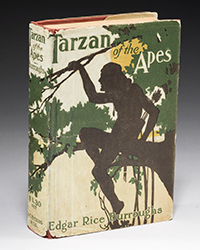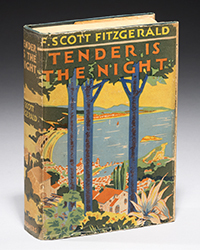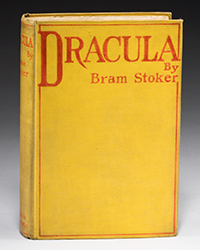An Editor's Introduction by Bruce McKinney
New dealers are a healthy sign for the rare book field and often enough new men and women enter the trade, often having apprenticed with established dealers and found the process and the prospects appealing. For retiring dealers the process is more somber for what began as a hopeful venture often turns out to be more difficult and complicated than was earlier envisioned. Nevertheless, many weather the process and find success.
Marc Sena Carrel became a used and rare book dealer in 2003 and is wrapping up his bookselling enterprise in 2018. He has been trying different approaches with varying degrees of success and now stands on the precipice of the final stage, more aggressive price cutting. His story is both interesting and illustrative for he has been careful.
The books that remain in his inventory are very good copies and his prices appropriate to selling slowly over years. But his closeout assumes both bulk buyers and seller flexibility because a closeout is like a timed offer and the offers will be percentages of asking prices.
We suggested to Marc that he write up his story in the first person. This is his story but it also the story of other dealers who have sold, as well as being illustrative for dealers who will someday sell or liquidate. The names and the books change but the emotional thread that runs through his experience is the same thread that has run through the trade for hundreds of years.
His story.
Exiting the Bookseller Business:
How One SF Bay Area Seller is Going about It
by Marc Sena Carrel
After 14 years as a specialty bookseller, an autumn of life pursuit, I am planning to close down my book business, The Book Carrel, in the months ahead. It’s an attractive and select inventory, in my humble opinion, and is on offer including book descriptions and photos, more about which later. Closing shop is a bittersweet experience but the time has come. It’s a daunting prospect in some ways but liberating in other ways.
I hope this article will serve as informal guidance for experienced dealers anticipating closing down their book biz for whatever reasons as well as something to ponder for novices contemplating a dive into the world of used book shop operations.
First a bit of background…. Going into the book trade in 2003 was a natural, after a lifetime of book collecting while working in a variety of fields, some book related, others not. As a young man I worked as a draft counselor and legal aide, spent some years as a Hollywood extra and print model, then worked as a copy editor and proofreader, later taught ESL and US Civics in the public school system, and eventually worked for many years as an investigator and mediator for a federal civil rights law enforcement agency. Throughout all that time, since my late teens to the recent past, I was at home in the world of books.
As a bookseller I’ve been focused on carrying a wide variety of art, design and archaeology books. This includes volumes on painting, prints, sculpture, theater, dance, opera, architecture, landscape, interiors, fine furniture, antiques, and more, with a special emphasis on Chinese and Japanese arts and antiquities, but also with representative holdings in European and American art.
My bookseller holdings have been modest by sheer number. I’ve carried about 8,000 titles over the course of 14 years. But I’ve always been attracted to niche markets and out-of-the-mainstream books and have preferred to focus on a small stock of select titles. I’ve aimed for the scholarly and rare, even the obscure, and insofar as possible avoided mass market stock. (The books, prints and ephemera in the accompanying illustrations will give you a notion of what I mean.) Admittedly, though, the battle of quality versus quantity is a difficult one for the bookseller.
I have always operated as a sole proprietor. And, for what it’s worth, I am not and have never been a brick-and-mortar shop. I’ve always been an online-only presence. Also, curmudgeon or not, I’ve never had a presence on social media and never wanted to.
So how does a small volume bookman in my situation – or bookwoman, as the case may be – go about closing shop? More specifically, how does the bookseller find bulk buyers for remaining inventory? Well, let me share my recent experience.
I began planning my exit at the end of 2016, anticipating needing a full year to comb through my stock, save favorite items for my personal library, determine what to donate, decide what to shop out to auction houses, and identify and reach out to potential buyers, whether dealers, institutions or collectors.
As to very low price-point books, and speaking strictly as an online seller, I’ve found they are often more trouble to stock and ship than they are worth, and so I had no problem donating hundreds of such books earlier in the year. These will be used as tax deductions based on charitable contributions.
Commencing several months ago I tried selling off select books, prints and ephemera at a couple of specialty auction houses in the US. Over the last ten years I’ve consigned books as far afield as Christie’s Paris and as close to home as Bonhams San Francisco. In fact I’ve been both a consignor and buyer at auctions since a teenager, for about fifty years, and so am no tyro at this. In the 21st century, though, business models for auction houses have been changing as rapidly as business models for book dealers. What’s more, there’s some evidence to suggest that whereas book collectors in the past tended to feel more comfortable buying from professional dealers, nowadays many book enthusiasts believe, rightly or wrongly, that they can do better buying at auction than from dealers.
To test the waters as to how best to sell off my remaining stock I committed a couple hundred books to various auctions this year. I included some attractive books worth $5,000 or more at retail and with few or no other copies on the market, along with books of just middling value and that are carried by multiple dealers. I shipped approximately 50 lots of select titles to the East Coast. The books sold over the course of four auctions starting in June. The results were not good... a bit under 25% of competitive market value. Incidentally, the long-overdue check from one of these venues, National Book Auctions, has not arrived as of this writing but I trust it will come eventually.
I also placed select titles at both ends of the price spectrum with auction houses closer to home. Those books, on average, did significantly better at auction. A few books did surprisingly well while others went for a song. Of course, generally speaking, an experienced consignor does not expect less-than-stellar books selling at auction to fetch estimated retail value but hopes to get close to it…. Or at least cover the initial investment and then some.
As to all auctions this year, taking into account the consignor premiums and the shipping fees, I broke even or exceeded my original purchase prices, with some exceptions. Considering the time and energy spent agreeing on acceptable titles and estimates, negotiating consignment terms, packing the books, mailing them off or carrying them in, and waiting on payment -- some houses, such as PBA Galleries, are much better than others in those respects -- a prospective book dealer going out of business should weigh whether it is worth the effort. It also must be said that, realistically, in today’s market it is a race to the bottom for many books. Only the truly rare and sought-after seem to be holding their value or increasing in value.
I’ve also tried offering discounted prices through intermediaries for limited time periods. For example a 40% discount sale on Biblio had no noticeable impact… but then again, few of my sales over the years have come through Biblio. AbeBooks -- now owned, alas, by Amazon -- would likely bring in more sales for me at a similar discount. Bear in mind that, in addition to losing the difference between the discounted price and the original list price, you still have to pay a commission on each intermediary sale.
Speaking matter-of-factly, reaching out to other book dealers has been mostly fruitless to date but success is largely a question of reaching a sufficiently large and receptive audience of savvy buyers who recognize fine, saleable and attractively-discounted books when they see them. Late last year the rare books department of Logos Books in Santa Cruz expressed interest in acquiring many of my books but by June of this year they suddenly went out of business. "John Livingston, the store’s owner and operator for its entire 48-year run, said that he put the store up for sale a year ago. Facing little interest and no serious offers, as well as sharply declining revenues, he has decided to close his business."
Many stores, such as Green Apple in San Francisco, Powell's in Portland, and Paragon Book Gallery in Chicago never bothered to reply to my repeat queries. Should we chalk this up to a lack of courtesy in an era that seems to foster increasingly self-centered behavior? “If I’m not seeing an advantage for me, why should I bother to reply?” Or are they perhaps just understaffed and overwhelmed?
We all know that many or even most of our fellow booksellers are professional and collegial, upholding the high standards of ABAA and IOBA, and will contact you whether or not your books are of interest and, if excited about your holdings, will negotiate with you in good faith. Swan’s Fine Books is exemplary, as is Jerry Shepard Bookseller, to mention a few. Some booksellers in the SF Bay Area with whom I have had direct conversations, including general interest as well as specialty or niche sellers, expressed moderate interest but regretted that cash flow problems prevented buying large groups of books or relatively costly books. This is certainly understandable.
By July I divided my inventory into a few carefully chosen categories, such as books on Chinese and Japanese art, antiquities and archaeology, some 400 volumes. I reached out to several special collections librarians at various colleges, universities and museums regarding those book collections. The few who answered, such as the head librarian at San Francisco’s Asian Art Museum, reported constrained budgets for book acquisition purposes. Incidentally, I was mostly careful to avoid soliciting large university libraries that have specialty collections of, say, 50,000 + volumes inasmuch as they probably already have many of the titles in my own inventory. Examples of the latter would be the East Asia Library at Stanford University and the C.V. Starr East Asian Library at U.C.Berkeley, to name but two.
There’s no doubt that excellent contacts for end-of-business sales purposes can be built up within the trade by ongoing and active participation in book fairs and exhibitions. I myself have never participated as a merchant in book fairs; my mobility impairment simply made this unrealistic. So I don’t have a wide group of show-based colleagues to notify by word of mouth of my impending business closure and the availability of remaining book stock. But, to state the obvious, the bookseller going out of business who has done book fairs on a regular basis will want to reach out to fellow booksellers met on the show circuit. There are, after all, quite a number of dealers who focus on dealer book shop closure sales as a primary means of obtaining fresh stock. Be aware, though, that most will try to offer pennies on the dollar. The art of the deal, Donald-style.
If you are contemplating closing shop, you might want to seek out electronic bulletin boards or Group Discussion ListServes, open to book dealers, and used by university libraries, museums and other institutions that are likely to be particularly interested in your holdings. Note, however, that many such boards specifically enjoin subscribers from listing notices that have a commercial purpose.
For those book shop proprietors who belong to a professional organization such as ABAA or IOBA, by all means advertise on the For Sale page of the organization’s ListServe, such as the Tradebooks Email List at IOBA.
Circumstances, of course, will vary for book store owners seeking to sell off remaining inventory. Some shop owners will have no interest in hanging on to their books or will lack storage space or will be pressed for whatever money they can get from selling off. I’m fortunate in that I have a decent federal pension and social security retirement income from previous jobs and I own a nice house and need not contemplate a fire sale of my inventory. I have space in my home to accommodate up to 2,500 volumes and I’m very interested in the subject matter of most of my books. I’ll fold them into my personal library if it comes to that.
Meanwhile I am happy to entertain all good faith purchase offers from serious buyers -- whether collectors, institutions or fellow dealers -- and will work collegially with them to obtain a win-win outcome. Offers can be for select groupings of books or for the entirety of the inventory. Note that the current competitive retail value of my remaining books -- about 1,100 volumes as of this writing -- is in the range of $225,000 to $250,000.
I pride myself on writing accurate and detailed descriptions for each book, print and ephemera item. I also have thousands of crisp color digital images of the items. All descriptions and photos will gladly be placed at the disposal of bulk buyers, to save the buyers considerable extra work; I am not at all possessive about such matters and will do what I reasonably can to help bulk buyers archive or resell the inventory.
If you want to take a close look at my remaining inventory you can view the items at www.bookcarrel.com
I’ve earlier observed that while closing shop can present a formidable challenge it can also bring about a feeling of release and satisfaction. Satisfaction in the narrow sense refers, for me, to relief from copious recordkeeping for income tax, sales tax, customer consignments and other purposes, relief from hauling about boxes of books that seem increasingly heavy over time, and the like relief.
But there’s a much larger sense of fulfillment. Whether or not you sell off remaining inventory at a price that meets your expectations and your needs, you can take satisfaction knowing that you, with efficiency and diligence, provided fine books over time to appreciative readers, contributing to their individual enlightenment and also to the general welfare of all peoples, promoting cultural literacy and ameliorating in some measure the human condition…. if that’s not too grand a note on which to close. Best wishes to those of you dedicated booksellers who will be going out of business in the months or years ahead. And strong encouragement to those, especially the young, just starting out on the path of fine book selling.










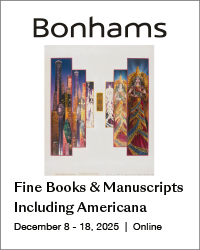

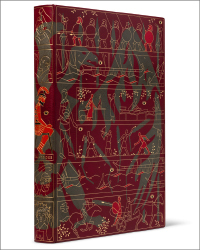

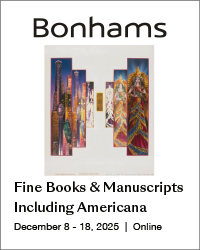
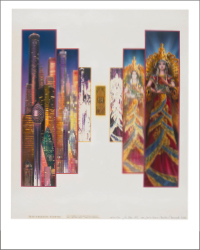
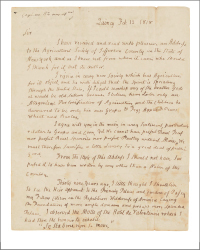

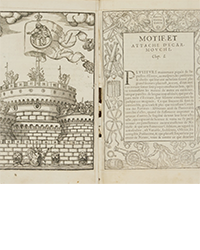
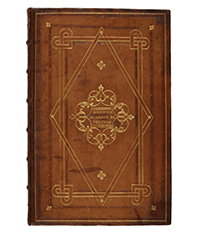
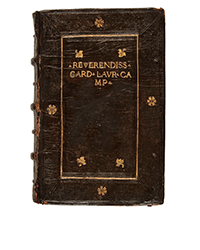
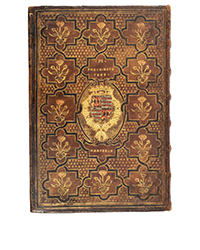

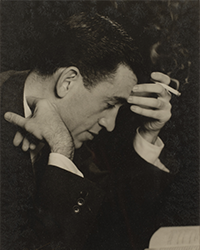
![<b>Sotheby’s, Dec. 16:</b> [Austen, Jane]. A handsome first edition of <i>Sense and Sensibility,</i> the author's first novel. $60,000 to $80,000. <b>Sotheby’s, Dec. 16:</b> [Austen, Jane]. A handsome first edition of <i>Sense and Sensibility,</i> the author's first novel. $60,000 to $80,000.](https://ae-files.s3.amazonaws.com/AdvertisementPhotos/9a74d9ff-42dd-46a1-8bb2-b636c4cec796.png)
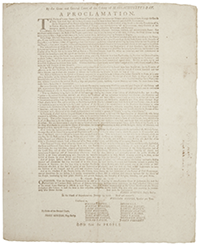

![<b>Heritage, Dec. 15:</b> John Donne. <i>Poems, By J. D. With Elegies on the Author's Death.</i> London: M[iles]. F[lesher]. for John Marriot, 1633. <b>Heritage, Dec. 15:</b> John Donne. <i>Poems, By J. D. With Elegies on the Author's Death.</i> London: M[iles]. F[lesher]. for John Marriot, 1633.](https://ae-files.s3.amazonaws.com/AdvertisementPhotos/8caddaea-4c1f-47a7-9455-62f53af36e3f.jpg)
